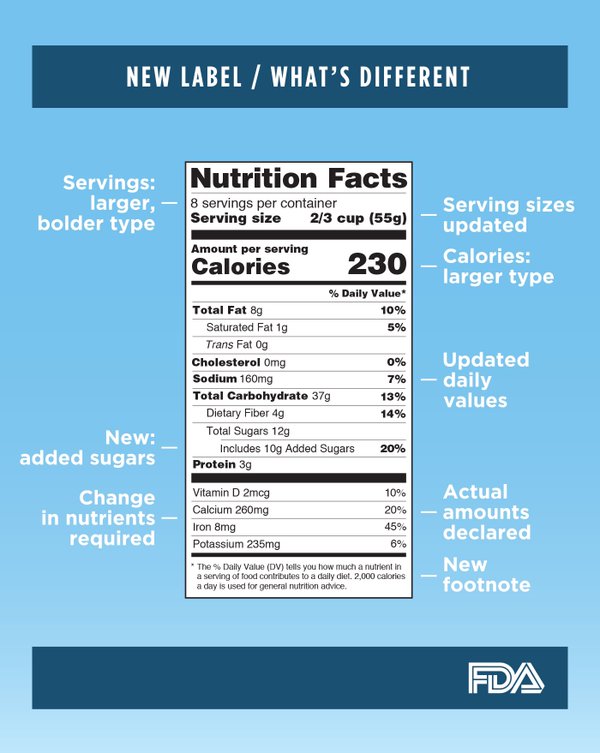By: Robert M. Califf, M.D., Commissioner of the U.S. Food and Drug Administration (FDA) and Susan Mayne, Ph.D., Director, FDA’s Center for Food Safety and Applied Nutrition
 The Nutrition Facts label can make a real difference in helping consumers have the information they need to make dietary choices that support a healthy diet. The FDA has finalized the new Nutrition Facts label on packaged foods with changes that will make it easier for consumers to make informed choices about what they’re eating. Our goal is to help people make better informed food choices that support a healthy diet. The changes are based on updated science that reinforces the link between diet and chronic conditions such as obesity, heart disease and diabetes.
The Nutrition Facts label can make a real difference in helping consumers have the information they need to make dietary choices that support a healthy diet. The FDA has finalized the new Nutrition Facts label on packaged foods with changes that will make it easier for consumers to make informed choices about what they’re eating. Our goal is to help people make better informed food choices that support a healthy diet. The changes are based on updated science that reinforces the link between diet and chronic conditions such as obesity, heart disease and diabetes.This is not about telling people what they should eat. It’s about making sure that they know what they’re eating. With that knowledge, they can make more healthful choices. For example, the new Nutrition Facts label includes the addition of information about added sugars. Studies have shown that healthy dietary patterns that include lower amounts of sugar-sweetened foods and beverages are strongly associated with reduced cardiovascular disease.
Obesity continues to be an epidemic in this country, and excess weight can lead to a host of health problems. People who want to make healthier food choices will really benefit from the more prominent display of calories and updated information about serving sizes that more accurately reflects what people are likely to eat in one serving.
We all play many different roles in life. In addition to taking care of ourselves, we’re parents and grandparents who want to take good care of our families. We have busy lives, and we need ready access to information about the nutritional value of the foods we eat. That’s why design changes to the label will make it easier to see essential information at a glance; including calories and information about serving sizes and servings per container.
The label also reflects new or updated Daily Values (DVs), which are the reference amounts of nutrients to consume or not to exceed and the basis of the percent Daily Value (% DV) on the nutrition label. In addition to added sugars, new nutrients that must be declared include Vitamin D, which is important in bone development, and potassium, which is good for controlling blood pressure; both nutrients of which people aren’t getting enough.
Across the board, this is a better label for all of us. And you can have confidence in the science on which it is based, including evidence used to support the Dietary Guidelines for Americans, nutrition intake recommendations from the Institute of Medicine, and nutrition intake information from the National Health and Nutrition Examination Survey (NHANES).
We’ve reached an important milestone, but our work is not yet done. Our next step is to reach out to the larger community to provide education and outreach on the new label and what it means for consumers and families.
The Nutrition Facts label can make a real difference in helping consumers have the information they need to make dietary choices that support a healthy diet.
